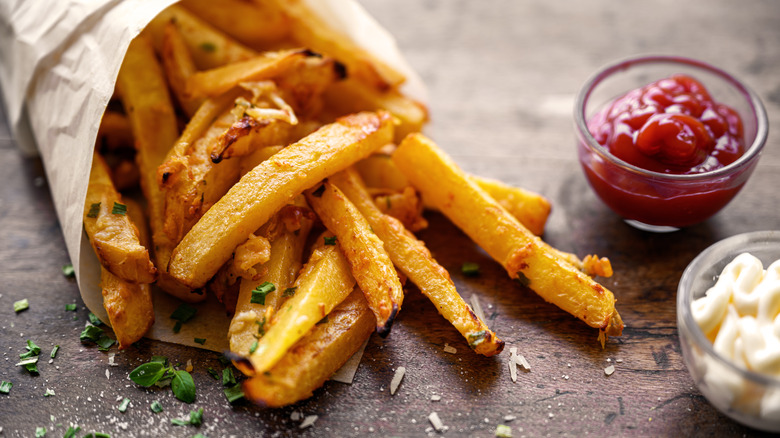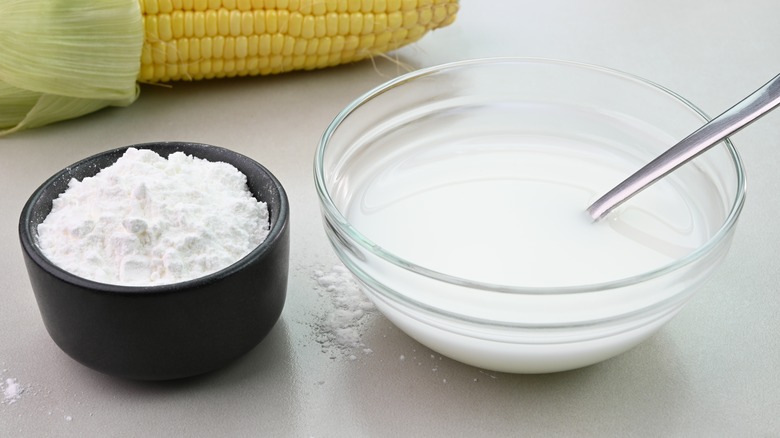The Key To Extra Crispy French Fries Is Already In Your Pantry
Making french fries at home has many benefits. It is a great way to save money, and it allows you more control over what goes into your fries, from the amount of salt and oil to the type of potatoes and seasonings you use. One downside some home cooks may experience, though, is the inability to get that super crispy exterior that one imagines tasting the ideal fry. There's no need to throw in the towel, though; making fresh, crispy fries in your own kitchen is very possible with the addition of one common pantry ingredient — cornstarch.
Cornstarch is a pure starch extracted from corn kernels, and is most commonly used as a thickening agent for soups, sauces, and syrups. However, it can also be put to use as a crisping agent for everything from roasted vegetables to chicken tenders and tofu. When making fries at home, you are likely to use an oven or air fryer to cook the potatoes rather than a deep fryer. These methods do not heat the potatoes as quickly as hot oil would, meaning there is less opportunity for the natural starch inside the potatoes to form a crispy shell like you're used to in restaurants. Cornstarch saves the day by adding extra starch to the surface of your fries that will easily crisp as soon as it meets the heat.
How to add cornstarch to your fries
We recommend against tossing your potatoes directly in cornstarch, since doing so makes it less likely the starch will stick and may also leave a powdery, mealy texture on your tongue when you take a bite. Instead, make a cornstarch slurry by combining the starch with enough cold water to create a thin, batter-like consistency. Once it has been prepared, toss your cut potatoes in the slurry until each wedge is completely coated, then cook your fries as you normally would.
If you don't have cornstarch in your pantry, or if you have a dietary restriction that prevents you from using it, there are a handful of alternatives that you can use to get a similar result. These include arrowroot starch, tapioca starch, and potato starch. It is worth noting, however, that cornstarch has a significantly higher amount of amylose — one of the molecules responsible for crisping — than these alternatives, so it is still the preferred starch for this purpose if you are able to choose it.

